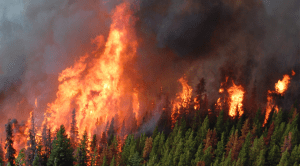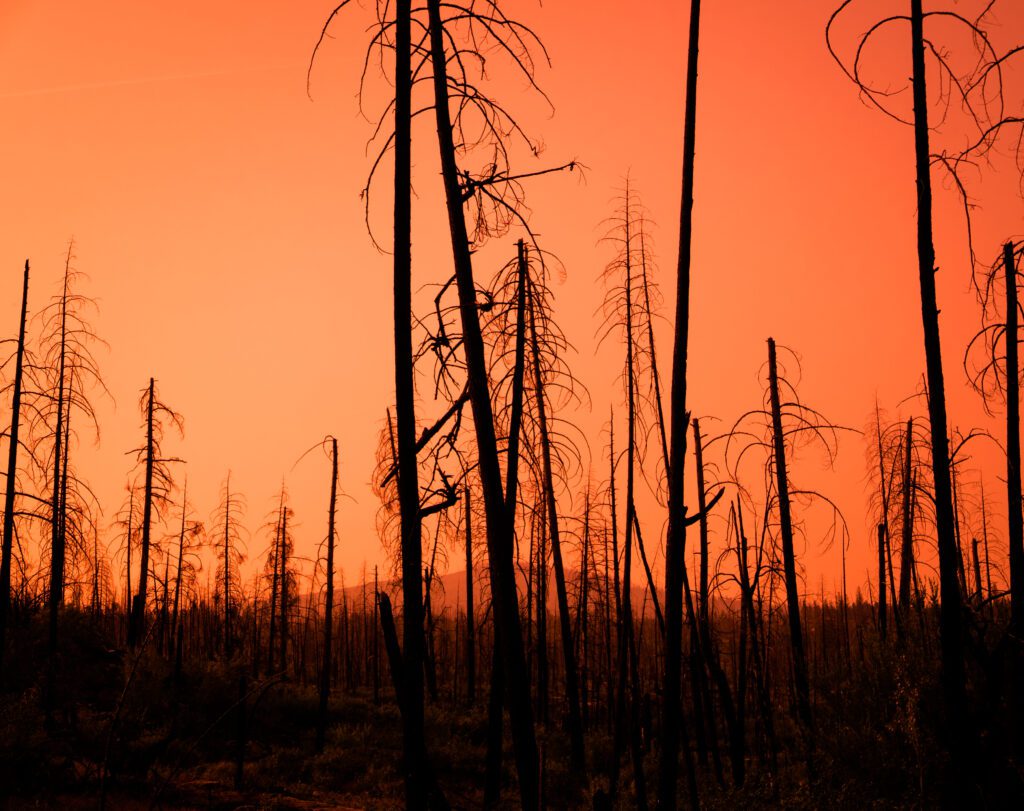
The increase in greenhouse gas emissions has made many parts of the world hotter and drier. These conditions are ideal for extreme wildfires, like the ones that are happening in Canada.
Wildfires have destroyed livelihoods across the country and Canadians are scared – for themselves, their families and their future. Unfortunately, during these stressful times, misinformation and distrust can spread quickly.
Over the past two years, there have been more questions about the causes of the devastating wildfires that have burned millions of hectares in Canada. With so much destruction, people understandably want to know who is responsible and how we can stop it from getting worse.
In this blog, I’ll be setting the record straight on the cause of wildfires and what needs to happen to prevent them from getting worse in the future.
Climate change creates the right conditions for wildfires to spread easily, but it doesn’t start fires on its own
With drier and warmer conditions, Canada’s forests become like a tinderbox that can cause a normal fire to get out of control. These fires can spread quickly and become extremely difficult to control, even for experienced firefighters.
Regardless of whether the fire was started by a human (by accident or on purpose) or through natural processes (such a lightening), the main issue is how fast it can spread and how much damage it can cause before being put out. Providing more support to train additional community firefighters will help in the short-term. However, the best way to prevent extreme wildfires is through reducing the greenhouse gasses that are responsible for the warmer and drier conditions behind these disasters.

Wildfires are part of a natural cycle in Canadian forests, but not at this scale and frequency
Last year was the worst wildfire season in recorded history for Canada, burning over 18 million hectares, which was more than double the previous record of 7.6 million hectares in 1989. After a warm winter with little snow, Canadians now face another potential disastrous wildfire season . This is not normal. It’s happening because of unchecked climate change. Without reducing greenhouse gas emissions, wildfires and other climate disasters, like drought and heat waves will get even worse.
Greenhouse gas emissions from the fossil fuel industry are directly linked to the rise in extreme wildfires in recent decades
The increase in extreme wildfires in parts of North America can be directly linked to polluting emissions from the fossil fuel industry. From 1986-2021, nearly 40 per cent of the area burned in Western Canada and the United States is because of greenhouse gas emissions from 88 major fossil fuel producers and cement manufacturers. These industries are responsible for much of the devastation Canadians have experienced and must be held accountable to prevent the climate crisis from worsening.
Take Action: Stop Big Oil From Polluting Our Climate
Governments in Canada must support impacted communities immediately, while forcing big polluters to reduce pollution for long-term security
Communities affected by wildfires need immediate support from all levels of government in Canada. It should be a top priority for decision makers to train firefighters, while providing support with the costs of wildfires and relocation for affected communities.
However, reactive measures are not enough to protect our future. Federal and provincial governments must also address how big polluters in the country are risking our health and future for their profits. Implementing emissions-reducing policies, like the oil and gas emissions cap, can hold big polluters accountable and force them to reduce their greenhouse gas emissions.
The post Setting the Record Straight: Climate Change and Wildfires in Canada appeared first on Environmental Defence.
This post was originally published on Environmental Defence.
